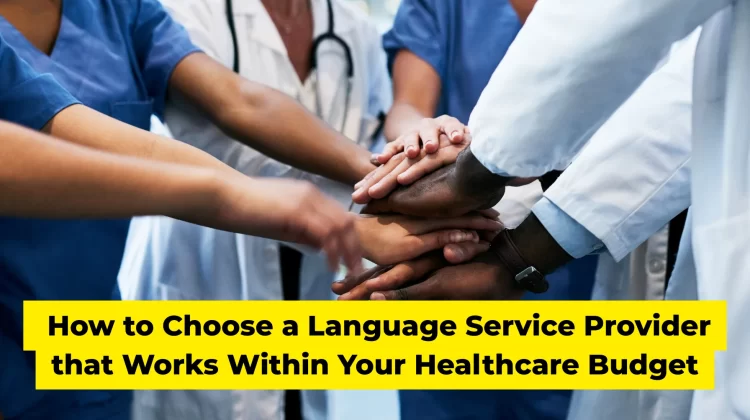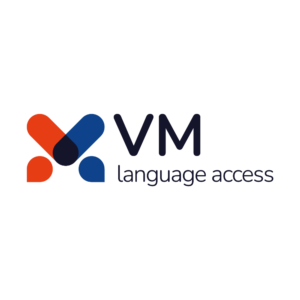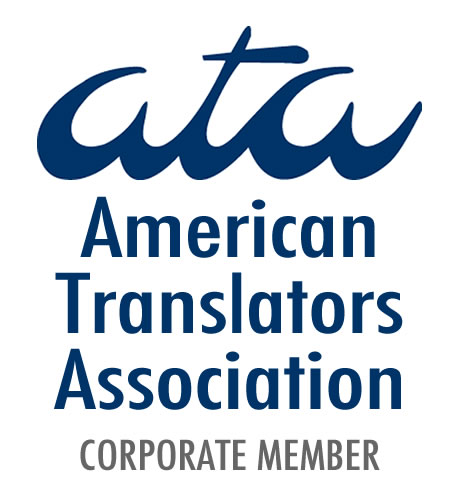
Patient Access & Language Services: How to Choose a Language Service Provider that Works Within Your Healthcare Budget
Providing healthcare in today’s diverse society comes with both challenges and opportunities. One of the most critical aspects of patient care is clear communication, especially when patients speak different languages. Miscommunication can compromise patient safety, create legal risks, and diminish patient satisfaction. For healthcare managers, including language program managers in clinics and hospitals, the task is to provide access to professional language services without overshooting the budget. The good news is that with a well-chosen language service provider (LSP), you can achieve both accuracy and affordability, ensuring that every patient receives the care they deserve.
The Critical Role of Language Services in Healthcare Settings
Language services in healthcare are not just a convenience—they are a necessity. Every patient interaction, from a routine appointment to the discussion of a complex medical procedure, requires precise understanding.
Ensuring Patient Safety Through Clear Communication
In healthcare, even minor miscommunications can have serious consequences. Misunderstanding medication instructions, procedural explanations, or consent forms can lead to medical errors, delayed treatment, or non-adherence to care plans. Professional interpreters and translators ensure that patients fully understand their diagnosis, treatment options, and follow-up instructions.
Legal and Compliance Requirements in Healthcare
Healthcare institutions are legally obligated to provide meaningful language access to patients with limited English proficiency (LEP). Federal regulations, such as Title VI of the Civil Rights Act, require that recipients of federal funds, including hospitals and clinics, provide language assistance. Non-compliance can result in penalties, lawsuits, and reputational damage. Using a reliable language service provider helps ensure legal compliance while maintaining high-quality patient care.
Overcoming Challenges of Multilingual Patient Populations
Many healthcare facilities serve diverse communities with multiple language needs. Patients may speak Spanish, Mandarin, Arabic, Vietnamese, or less commonly spoken languages. Addressing these needs requires a flexible, scalable approach. Without proper planning, clinics risk gaps in communication that can impact care quality and patient trust.
Common Language Barriers in Clinics and Hospitals
Understanding the specific challenges healthcare managers face helps in designing an effective language access program.
Understanding Patients with Limited English Proficiency (LEP)
Patients who are not fluent in English may struggle to convey symptoms, understand medical histories, or ask questions. This can lead to incomplete or inaccurate information being recorded, affecting diagnoses and treatment plans. Interpreters act as a bridge to ensure that patients’ voices are accurately conveyed to healthcare providers.
Challenges in Verbal Communication During Appointments
Medical terminology is inherently complex. Even patients who have some English proficiency may not understand the nuances of medical terms. During consultations, rapid exchanges and technical vocabulary increase the risk of misunderstanding. Professional medical interpreters are trained to accurately convey information in both languages without altering meaning, tone, or intent.
Translating Medical Documents, Forms, and Patient Education Materials
Forms such as consent documents, discharge instructions, and insurance paperwork must be precise. Poor translations can lead to misinformed patients or legal disputes. Accurate translation ensures that patients understand their rights, responsibilities, and the care they are receiving.
Why Choosing the Right Language Service Provider (LSP) Matters
Selecting the right LSP is crucial for healthcare managers. Not all providers are equipped to meet the unique demands of the healthcare sector.
Ensuring Accuracy and Cultural Competency
Medical interpretation requires more than bilingual ability—it requires specialized training in medical terminology and an understanding of cultural context. Cultural sensitivity ensures patients feel respected and understood, which is vital for compliance and satisfaction.
Maintaining Confidentiality and HIPAA Compliance
Healthcare providers handle sensitive patient data. A reliable LSP must comply with HIPAA regulations, ensuring that patient information is kept secure during both interpretation and document translation.
Aligning Language Services with Your Budget and Operational Needs
Many LSPs offer flexible pricing models, including per-minute interpretation rates, hourly charges, and bundled translation packages. Selecting a provider that can tailor services to your facility’s volume and language needs helps control costs without compromising quality.
Key Factors to Consider When Selecting a Language Service Provider
When evaluating LSPs for your healthcare facility, consider the following:
Quality and Expertise of Linguists
Verify that interpreters and translators are professionally certified and experienced in medical terminology. Credentials and ongoing training demonstrate reliability and expertise.
Availability and Response Time
Healthcare emergencies can arise at any time. Choose a provider that offers on-demand services and rapid response times to meet urgent patient needs.
Cost Transparency and Flexible Pricing Models
Transparent pricing avoids surprises and allows for predictable budgeting. Flexible models enable facilities to pay for services as needed or commit to volume packages for cost savings.
Integration with Existing Healthcare Workflows
An ideal LSP will integrate smoothly with your scheduling systems, electronic health records, and administrative processes, ensuring that language support is seamless and efficient.
Practical Tips for Healthcare Managers to Maximize Language Access on a Budget
Prioritize High-Risk or Frequent Patient Interactions
Focus resources on departments and appointments where language barriers pose the highest risk to patient safety, such as emergency rooms, surgical consultations, and chronic disease management.
Use Technology to Supplement Human Services
Leverage remote interpretation platforms, translation management systems, and digital document distribution to enhance efficiency without compromising quality.
Leverage Pre-Translated Materials When Possible
Create a library of commonly used documents translated into your most frequent languages. This reduces repeated translation costs and ensures consistency across patient communications.
Build Long-Term Partnerships with Trusted LSPs
Establishing ongoing relationships with providers like VM Language Access allows for negotiated rates, priority scheduling, and consistent quality, ultimately stretching your language access budget further.
Benefits of Partnering with VM Language Access in Healthcare
- Access to Experienced Medical Interpreters and Translators
- Flexible Scheduling and Rapid Response for Urgent Needs
- Cost-Efficient Services Without Compromising Quality
- Improved Patient Satisfaction and Compliance
Language access is essential for providing patient-centered care. By selecting a trusted, flexible, and affordable language service provider like VM Language Access, healthcare managers can ensure that patients of all linguistic backgrounds receive accurate, culturally sensitive communication. Not only does this support patient safety and satisfaction, but it also ensures compliance with legal and ethical standards.
Breaking down language barriers is not just a regulatory requirement—it is a moral and operational imperative. With the right strategies and partnerships, clinics and hospitals can deliver high-quality care while effectively managing costs, creating a truly inclusive environment for both patients and staff.











